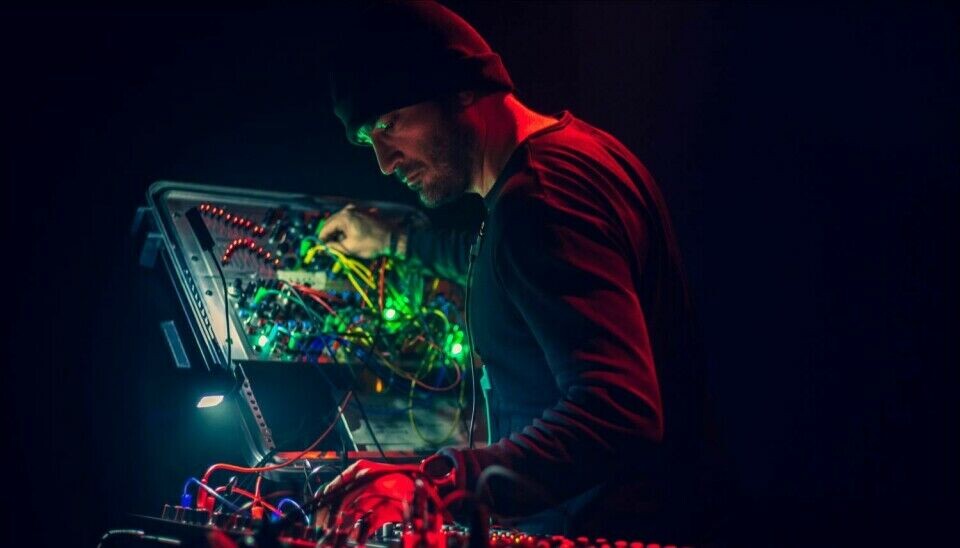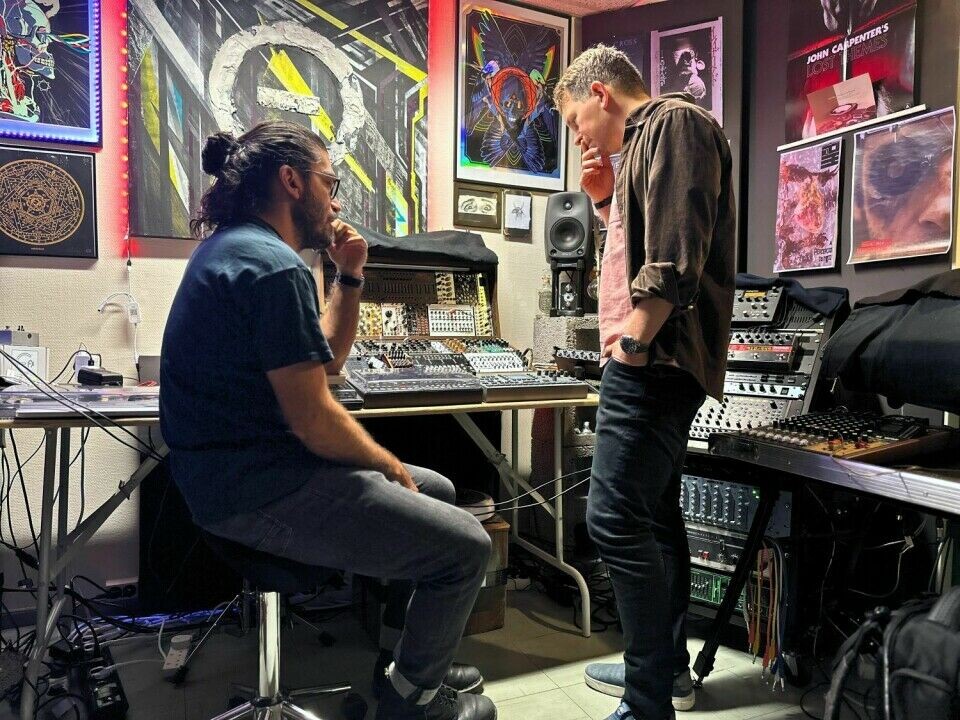THIS CONTENT IS BROUGHT TO YOU BY Nofima The Norwegian Institute of Food, Fisheries and Aquaculture Research - read more

Creating electronic music from food research
Researchers turn datasets from food research into electronic ‘music’. In this way, they hope to arouse interest in science among young people.
At Insomnia in Tromsø in October – an international festival for new electronic music and technoculture – you can hear the results of the SoundScape research project.
Nofima researcher Themis Altintzoglou believes it is a way to get more people acquainted with research. Completely new methods and arenas for research dissemination.
"There are many people who have never read a research article and who may also be sceptical about an institute like ours, which creates solutions and gathers knowledge to help society, including the future food industry,” he says.
In this way, the researchers hope to reach out to people who would otherwise have been almost impossible to get interested in research.
"Socioeconomically speaking, if just one 14-year-old becomes curious and wants to study a research programme at upper secondary school, our project pays off,” colleague Runar Gjerp Solstad adds.
Inspired by NASA and astrophysics
NASA collects cosmic sound with the Hubble Space Telescope and uses what it calls sonification in communications to generate interest in what is happening in space.
In a TED talk, blind astrophysicist Wanda Diaz Merced explains how she transformed datasets into sound. This allowed her to understand them and continue with the research she loved after losing her sight.
Using these as inspiration, bioengineer Runar Gjerp Solstad and consumer scientist Themis Altintzoglou turn research data into music.
Way back in his student days, Runar saw the blind astrophysicist give a lecture – and he was mesmerised.

“Unbelievably interesting. I thought it had to be transferable to the same thing we were doing. We use the same type of datasets, where the information is spread in three dimensions – time, intensity, and wavelength," he says.
He explains that he came into contact with Themis Altintzoglou when he started working at Nofima.
"He had been thinking exactly the same as me, and had even ‘played around’ with the technology that makes it possible,” Solstad says.
Met during lunch
And when two people capable of thinking 'outside the box' meet over the same lunch table, something can quickly arise—if not sweet music, then at least some kind of music.
In colleague Solstad, Altintzoglou found a guy with little knowledge about music but with a great interest in creative research dissemination.
He says his interest was piqued when he found software that could create sound from pictures of birds. The brighter the birds, the higher the tones. He thought that this might be transferable to the spectroscopic images that colleagues were working on in their research.
"But it didn’t go very well. Putting it diplomatically, it didn’t sound that nice, so there was nothing to build on. The project was terminated,” Altintzoglou says.
Completely different directions than expected
Altintzoglou has played in bands since he was 16 years old. For the last secen to eight years, he has also composed his own music.
What he calls electronic background music has also become film music – including in Sound The Alarm. It was screened at the Tromsø International Film Festival (TIFF) in 2023.
So when Solstad presented his ‘crazy' ideas, Altintzoglou was also ready to once again use sound in research.

“I've always been extremely fond of projects that are innovative and that move in completely different directions than expected. What happens if we do this instead of that, choose a new direction instead of the expected and safe option – which everyone thinks we should," Solstad says.
Difficult to get the project financed
The two researchers want to create an understanding of why creativity is such an important part of their job.
"It's easy to forget to be creative in your research when you just have to deliver what has been planned and tick the right boxes. Therefore, I think we have worked much more than what is expected in this extremely creative project,” Solstad says.
But no matter how creative you are, how eager you are, and how exciting the research project is – Money is needed to make it happen.
And making music out of datasets has proven overly creative for most research funders. This is despite the fact that the dataset’s foundation is research on the utilisation of rest raw materials and making full use of food resources, a direction that is constantly highlighted as being extremely important.
Purer proteins give a more harmonious soundscape
In the BlueCC research project, the scientists have collected lots of data, and many datasets. It was just a matter of getting started.
“Our datasets have data in three dimensions: time, intensity, and the wavelength of light – a bit like a map, which also shows data in three dimensions: height, length, and width," Altintzoglou says.
He explains that these data points are what they transform into sound: Time remains as time. Intensity becomes volume, and light turns into musical keys.
Solstad follows up:
"For example, if we extract collagen protein from fish skin and get purer and purer collagen as we develop the methods, this could affect the soundscape we create because a diversity of proteins will produce a more chaotic soundscape, while purer proteins will produce fewer tones."
The long-term goal is to be able to use this characteristic to create a more harmonious soundscape the purer the proteins in the dataset are.
Big plans
The two researchers have developed a scientifically rendered soundscape as the project’s delivery, and a slightly more artistically adapted version.
“We also want to create an NFT. It's a kind of data-signed artwork that we take ownership of via blockchain technology. We will have to see how much time and money we have,” Solstad says.
"Do you expect any debate about the use of tax revenues for such creative research – and dissemination of research?"
“Not only do we expect such a debate, we also believe that there should be one. It's fully understandable in a project that is so outside the box. That said: The Research Council of Norway has allocated funding. We have responded to a call for proposals, but we are ready to take part in a debate if anyone wants to challenge us,” Solstad says.
Purely a communication project
"What does society get out of a research project like SoundScape?"
“This project has no immediate research ambitions. It's purely a communication project. Perhaps the most valuable thing of all is that this delivery will reach an audience that would otherwise have been virtually impossible to reach,” Solstad says.
The two researchers also point to the importance of daring to think in completely new ways. That always being ahead of development is the essence of research.
“We want to create things that can be used, thereby creating interest. We want to shatter the notion that research is boring work,” Themis Altintzoglou says.

This content is paid for and presented by Nofima The Norwegian Institute of Food, Fisheries and Aquaculture Research
This content is created by Nofima's communication staff, who use this platform to communicate science and share results from research with the public. Nofima is one of more than 80 owners of ScienceNorway.no. Read more here.
More content from Nofima:
-
Red algae grown in wastewater from fish-farming facilities could become sustainable salmon feed
-
Pumpkins are good for more than just Halloween decorations
-
This is how temperature affects a salmon's health and growth
-
Study: Omega-3 and zinc is a powerful duo for salmon
-
Fish may turn yellow if frozen too fresh
-
Is it better if food is packaged in plastic or paperboard?




































